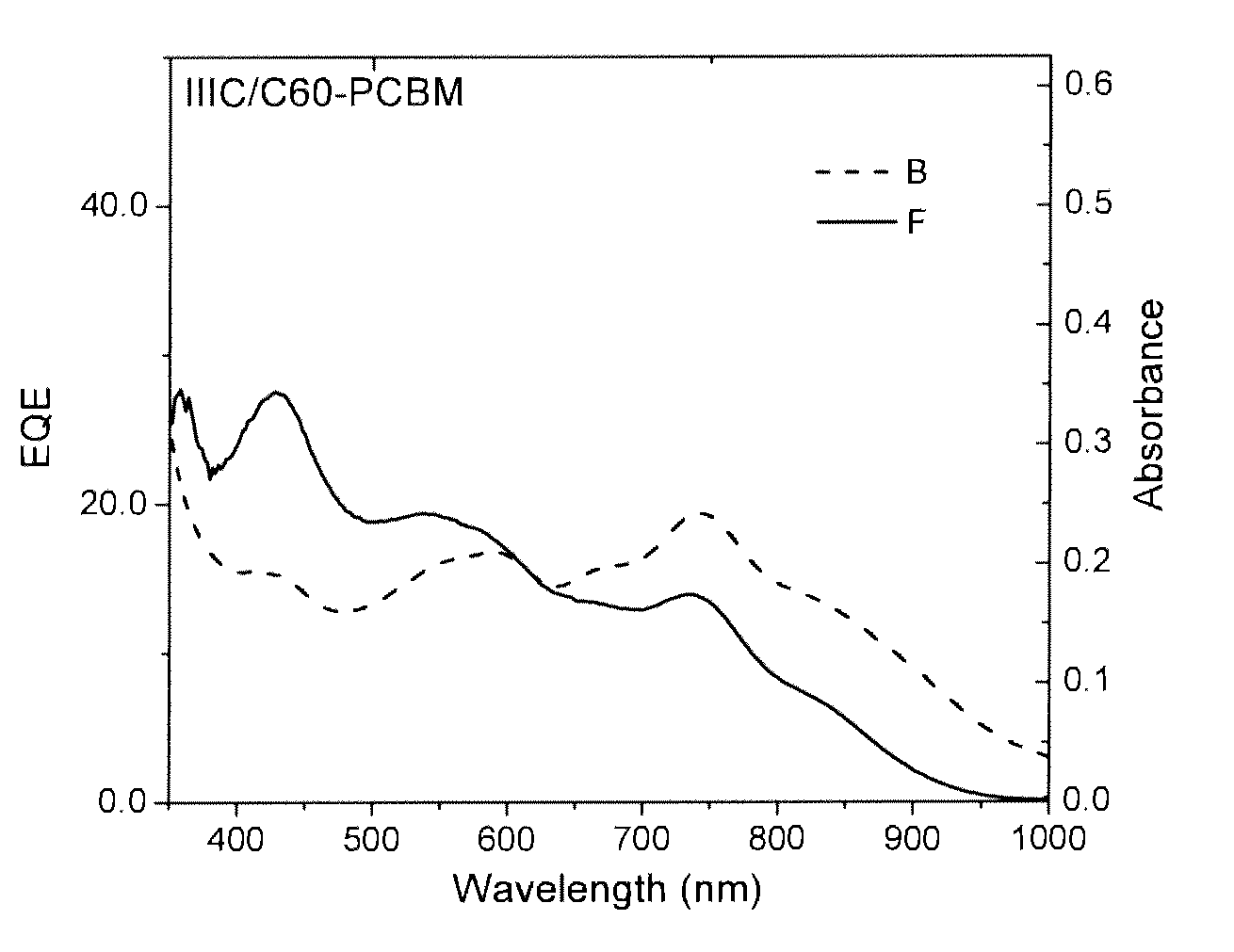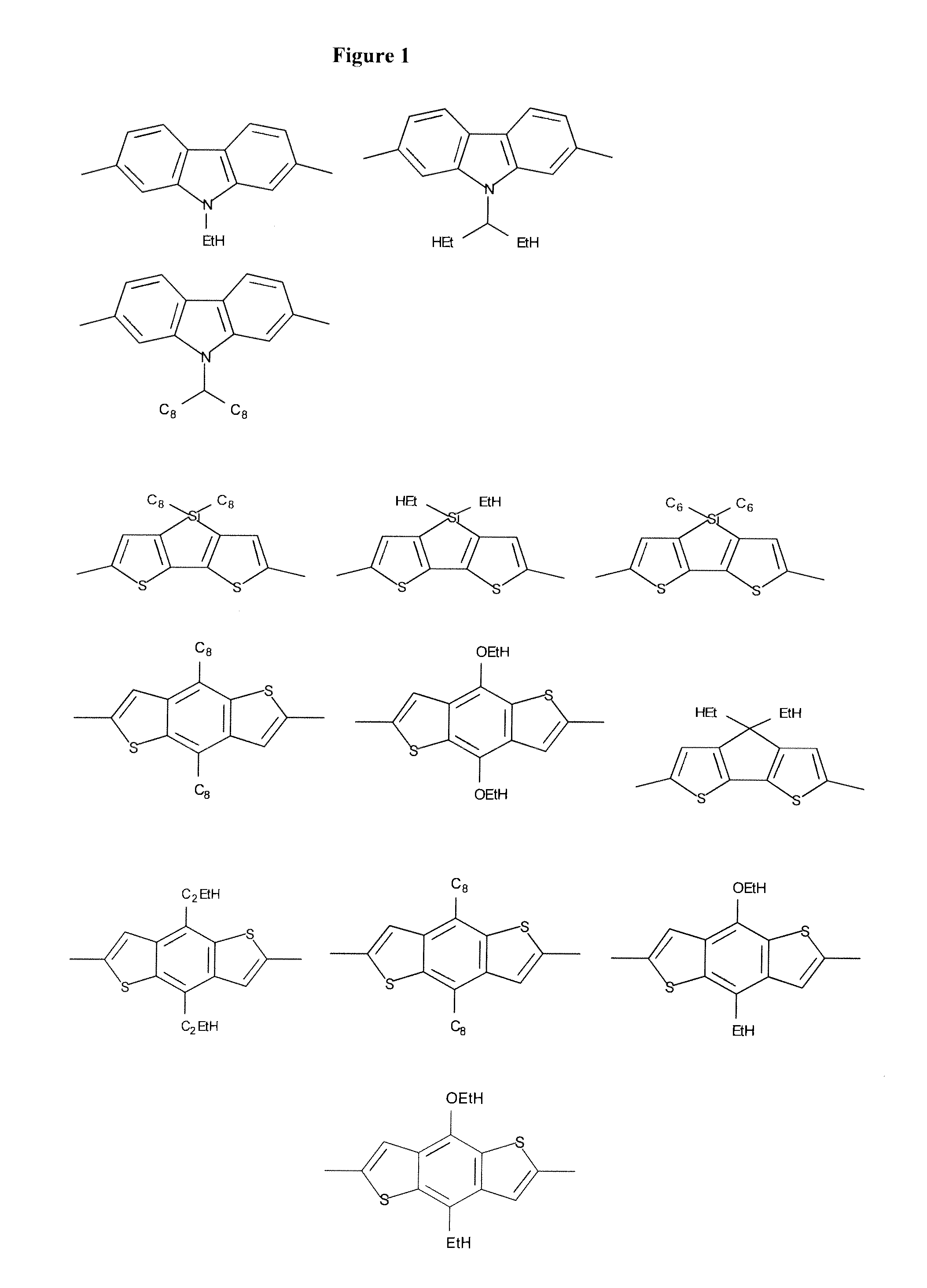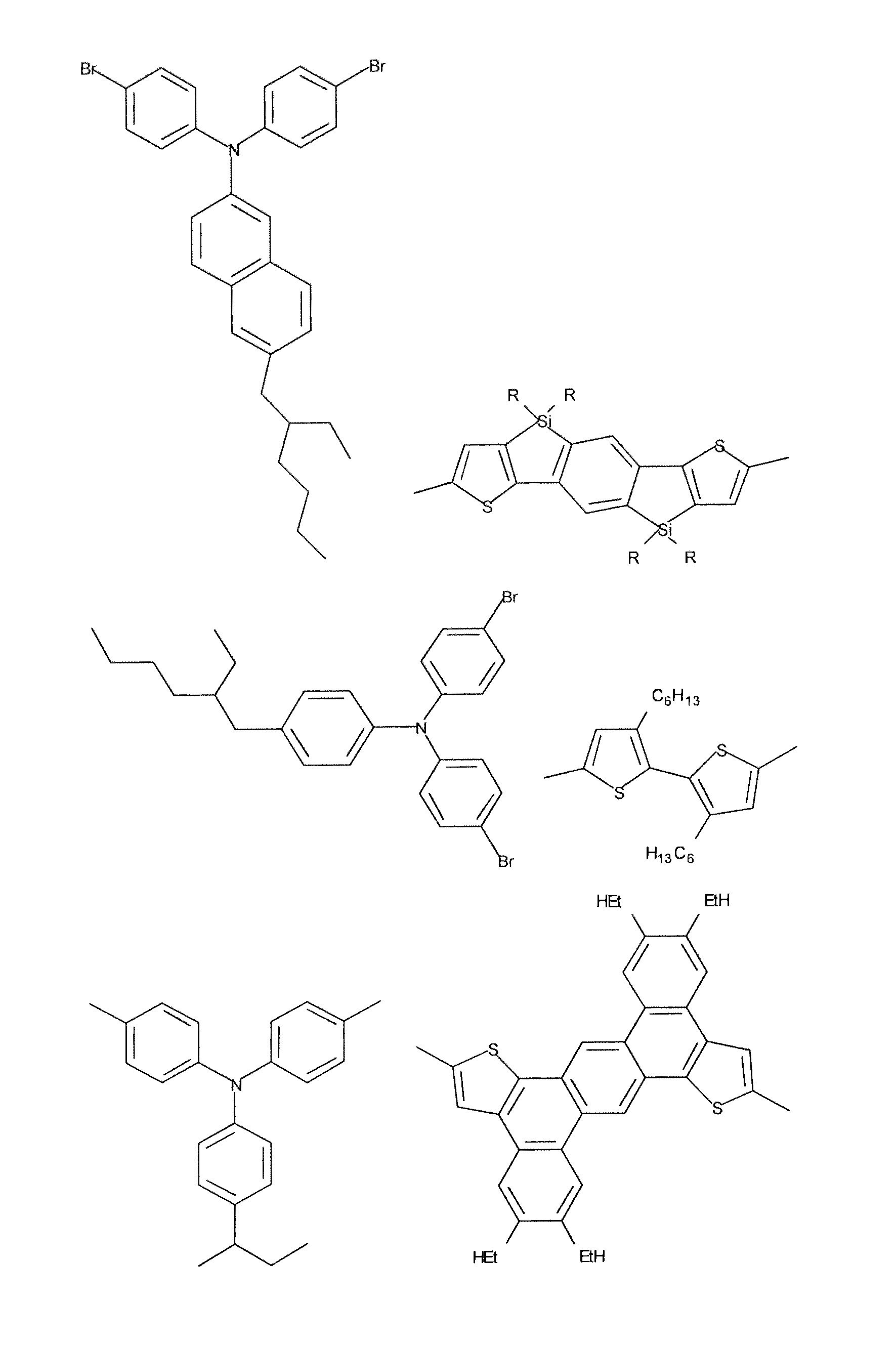Organic electronic devices and polymers, including photovoltaic cells and diketone-based and diketopyrrolopyrrole-based polymers
- Summary
- Abstract
- Description
- Claims
- Application Information
AI Technical Summary
Benefits of technology
Problems solved by technology
Method used
Image
Examples
example 1
2,6-bis(trimethyltin)-4,8-diethylhexyloxybenzo[1,2-b;3,4-b]dithiophene
[0241]
[0242]A dry 500-mL three-neck flask was flushed with N2 and was charged with 4,8-diethylhexyloxybenzo[1,2-b;3,4-b]dithiophene (6.9 g, 0.015 mol) and diethyl ether (Et2O) (150 mL, 0.1 M) via deoxygenated syringe. The reaction flask was cooled to −78° C. and a 1.7 M solution of tert-butyllithium in hexanes (23 mL, 0.038 mol) was added dropwise via deoxygenated syringe. After 30 minutes of stirring at −78° C., the solution was chilled to 0° C. and stirring was continued for 5 minutes, at which point the reaction mixture was chilled back to −78° C. A 1 M solution of thrimethyltin chloride in THF (39 mL, 0.038 mol) was added to the reaction flask dropwise and stirring continued for 1 hour at −76° C. The cooling bath was removed and the reaction mixture was allowed to warm to ambient temperature. As the reaction was completed, cool DI water (20 mL) was slowly added to the reaction flask. Then, the reaction mixture...
example 2
4,4′-bis(2-ethylhexyl)-5,5′-bis(trimethyltin)dithieno[3,2-b:2′,3′-d]silole
[0244]
[0245]A dry 500-mL three-neck flask was flushed with N2 and was charged with 4,4′-bis(2-ethylhexyl)dithieno[3,2-b:2′,3′-d]silole (10.4 g, 0.025 mol) and THF (250 mL, 0.1 M) via deoxygenated syringe. The reaction flask was cooled to −78° C. and a 1.6 M solution of tert-butyllithium in hexanes (37 mL, 0.062 mol) was added dropwise via deoxygenated syringe. After 30 minutes of stirring at −78° C., the solution was chilled to 0° C. and stirring was continued for 5 minutes, at which point the reaction mixture was chilled back to −78° C. A 1 M solution of thrimethyltin chloride in THF (62 mL, 0.062 mol) was added to the reaction flask dropwise and stirring continued for 1 hour at −78° C. The cooling bath was removed and the reaction mixture was allowed to warm up to ambient temperature. As the reaction was completed, cool DI water (50 mL) was slowly added to the reaction flask. Then, the reaction mixture was p...
example 3
2-trimethyltin-4,8-diethylhexyloxybenzo[1,2-b;3,4-b]dithiophene
[0247]
[0248]A dry 250-mL three-neck flask was flushed with N2 and was charged with 4,8-diethylhexyloxybenzo[1,2-b;3,4-b]dithiophene (4.0 g, 9.0 mmol) and THF (100 mL, 0.10 M) via deoxygenated syringe. The reaction flask was cooled to −78° C. and a 2.17 M solution of n-butyllithium in hexanes (4.1 mL, 9.0 mmol) was added dropwise via deoxygenated syringe. After 30 minutes of stirring at −78° C., the solution was chilled to 0° C. and stirring was continued for 5 minutes, at which point the reaction mixture was chilled back to −78° C. A 1 M solution of thrimethyltin chloride in THF (13.5 mL, 13.5 mmol) was added to the reaction flask dropwise and stirring continued for 1 hour at −76° C. The cooling bath was removed and the reaction mixture was allowed to warm to ambient temperature. As the reaction was completed, cool DI water (20 mL) was slowly added to the reaction flask. Then, the reaction mixture was poured into 100 mL ...
PUM
| Property | Measurement | Unit |
|---|---|---|
| Power conversion efficiency | aaaaa | aaaaa |
| Length | aaaaa | aaaaa |
| Length | aaaaa | aaaaa |
Abstract
Description
Claims
Application Information
 Login to View More
Login to View More - R&D
- Intellectual Property
- Life Sciences
- Materials
- Tech Scout
- Unparalleled Data Quality
- Higher Quality Content
- 60% Fewer Hallucinations
Browse by: Latest US Patents, China's latest patents, Technical Efficacy Thesaurus, Application Domain, Technology Topic, Popular Technical Reports.
© 2025 PatSnap. All rights reserved.Legal|Privacy policy|Modern Slavery Act Transparency Statement|Sitemap|About US| Contact US: help@patsnap.com



